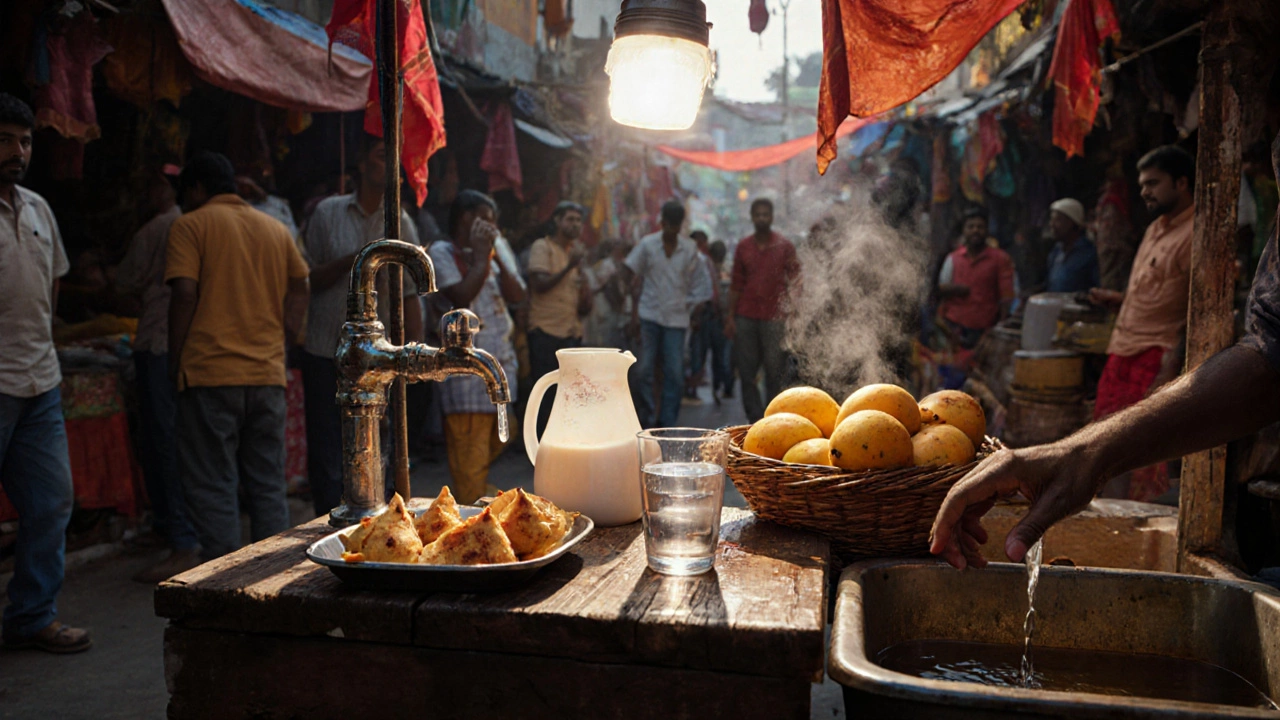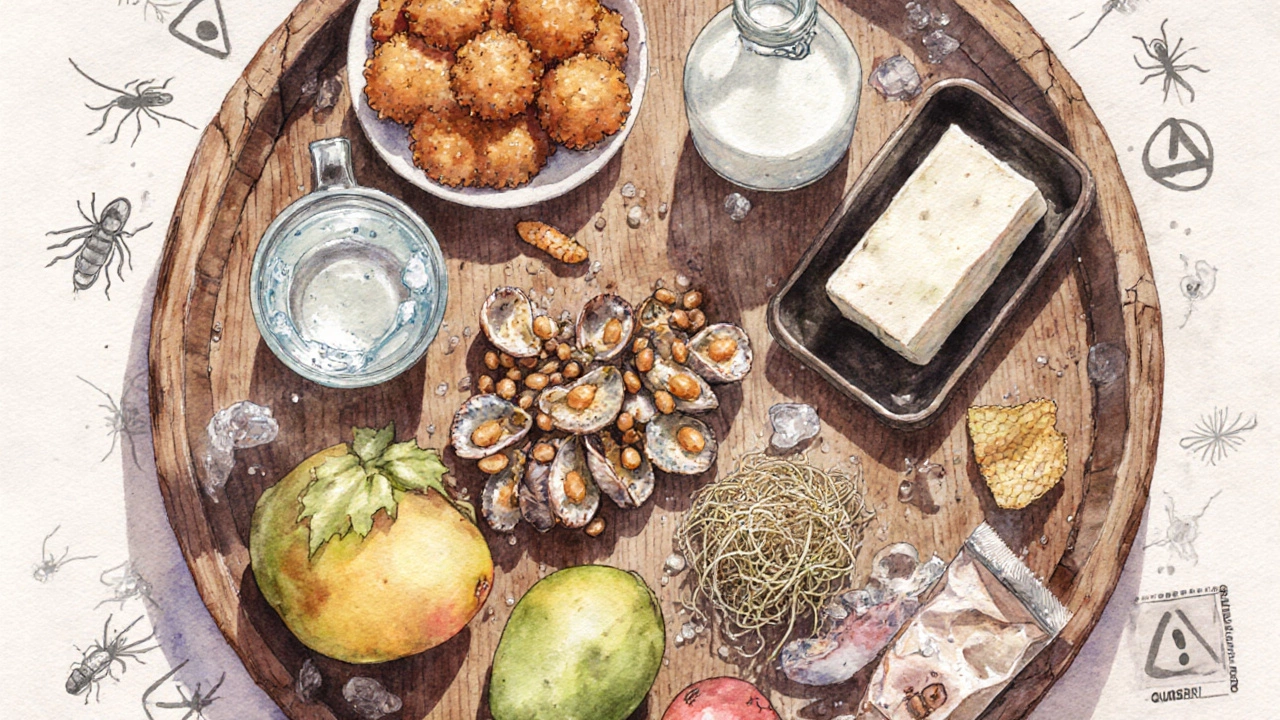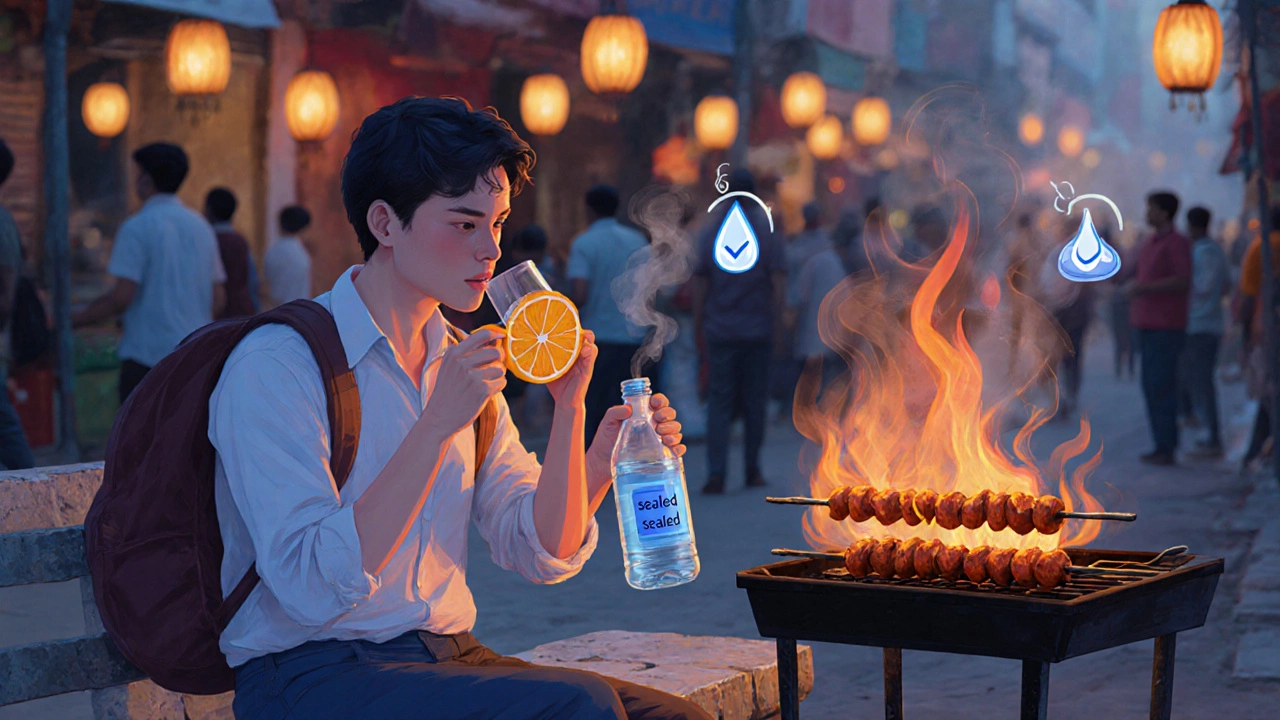Top Foods to Avoid in India for Safe Travel

Indian Food Safety Risk Checker
Check Food Safety Risk
Enter any Indian food or drink to see its safety risk level
Travelling through India is a feast for the senses - colour, sound, spice - but a single careless bite can ruin weeks of adventure. Knowing the foods to avoid in India lets you enjoy the flavors without the stomach drama.
Why food safety matters in India
India’s climate, dense population and varied infrastructure create perfect conditions for bacteria, parasites and toxins to multiply in food and drink. Travelers who ignore basic hygiene often return home with travelers' diarrhoea, cholera, typhoid or even hepatitis A. The good news? Most of these illnesses are preventable if you steer clear of common risk foods.
High‑risk foods you should skip
- Tap water - Even in big cities, municipal water is rarely treated to the standards Western visitors expect. Drinking it straight, using it for ice or brushing teeth with it can introduce E. coli or Giardia.
- Raw milk - Unpasteurised milk sold by street vendors looks fresh but can harbour Listeria, Brucella or Salmonella. It’s a common culprit behind unexplained fevers in backpackers.
- Street‑food snacks that are not cooked in front of you - Items like pre‑fried samosa, pakora or papri chaat that have been sitting under a lamp for hours may have been contaminated by flies or handlers’ bare hands.
- Unpasteurised cheese - Soft cheeses such as paneer made from raw milk, or homemade “khoya” sweets, can contain harmful bacteria if not boiled properly.
- Shellfish from coastal stalls - Freshwater mussels and oysters harvested near polluted rivers often carry Vibrio or heavy‑metal residues.
- Sprouted legumes - Mung bean sprouts sold in markets are a perfect breeding ground for Bacillus cereus if stored at warm temperatures.
- Loose fruit and vegetables washed in public water - Mangoes, guavas or lettuce rinsed in communal taps may retain pesticide residue and microbial load.
- Packaged snacks with expired "best before" dates - In some rural stores, stock rotation is lax; eating old chips or biscuits can lead to mold‑related mycotoxin exposure.

Safer alternatives and quick tips
Skipping the foods above doesn’t mean you have to miss out on Indian cuisine. Here’s how to enjoy meals safely:
- Drink only bottled water that’s sealed, or use a reputable purification tablet. Verify the seal before opening.
- Prefer hot tea, coffee or boiled water over chilled drinks. If you need ice, ask for “clear ice” made from boiled water.
- Choose street vendors whose cooking area is visible, with a steady flame and fresh ingredients. Watch the food hit a high heat just before you eat.
- Eat fruit that you can peel yourself - bananas, pomegranates, oranges - and discard the outer skin.
- When ordering dairy, ask if the milk has been boiled or opt for pasteurised yogurts sold in cartons.
- Avoid raw salads in street markets; stick to cooked vegetables or salad served in a restaurant that refrigerates properly.
- Carry a small bottle of liquid chlorine dioxide drops; a few drops in a litre of water neutralise most pathogens within 30minutes.
- Consider a probiotic supplement a day before travel; it can help your gut handle occasional bacterial exposure.
Quick risk comparison
| Food / Drink | Main risk | Safer choice |
|---|---|---|
| Tap water | Bacterial / parasitic contamination | Bottled or boiled water |
| Raw milk | Listeria, Salmonella | Pasteurised milk or boiled milk |
| Street‑food (pre‑cooked) | Fly‑borne microbes, stale oil | Food cooked on open flame in view |
| Unpasteurised cheese | Pathogenic bacteria | Pasteurised paneer or store‑bought cheese |
| Shellfish (coastal stalls) | Vibrio, heavy metals | Cooked seafood from reputable restaurants |
| Sprouted legumes | Bacillus cereus toxin | Cooked lentils or beans |
| Loose fruit / veg | Pesticides, microbes | Peel‑able fruit or washed veg in restaurants |
| Expired packaged snacks | Mycotoxins, rancid fats | Freshly stocked snacks with valid date |

Practical checklist before you eat
- Inspect the water source - is it sealed or boiled?
- Look at the vendor’s cooking equipment - is the flame strong and the food moving?
- Ask about the milk or dairy - is it pasteurised or boiled?
- Check the expiry date on any packaged item.
- Prefer foods that are served hot (at least 60°C) within two minutes of cooking.
- Carry a small packet of oral rehydration salts in case of sudden diarrhoea.
- Trust your senses - odd smell, discoloration or a sticky feel are red flags.
What to do if you get sick
Even with the best precautions, occasional stomach upset can happen. Here’s a quick action plan:
- Stay hydrated - sip boiled water or oral rehydration solution every 15‑20minutes.
- Avoid solid foods for the first few hours; start with bland items like plain rice or toast when you feel better.
- Visit a reputable clinic or government hospital if symptoms last more than 48hours, you have a fever above 38.5°C, or you see blood in stool.
- Carry a copy of your travel insurance details; many Indian cities have English‑speaking doctors in private hospitals.
Frequently Asked Questions
Is tap water ever safe to drink in India?
Only if it has been boiled for at least one minute or if you use a certified water‑purification system. Most hotels provide filtered water, but street‑level taps are unreliable.
Can I eat street‑food if I’m pregnant?
Pregnant travellers should avoid raw or under‑cooked items, unpasteurised dairy, and any food prepared in open‑air stalls where hygiene cannot be verified. Opt for cooked dishes served hot in reputable restaurants.
What’s the best way to wash fresh fruit?
If you must buy loose fruit, rinse it under boiled or bottled water and scrub with a clean brush. Peeling is the safest bet.
Are there any Indian dishes that are naturally low‑risk?
Dishes that involve thorough cooking-like dal (lentil soup), tandoori‑grilled meats, and baked rotis-generally pose low risk, provided they’re served hot and not left out for long periods.
How long can I keep bottled water after opening?
Once opened, store the bottle in a sealed container or cooler and consume within 24hours. Discard if the seal is broken or the water looks cloudy.